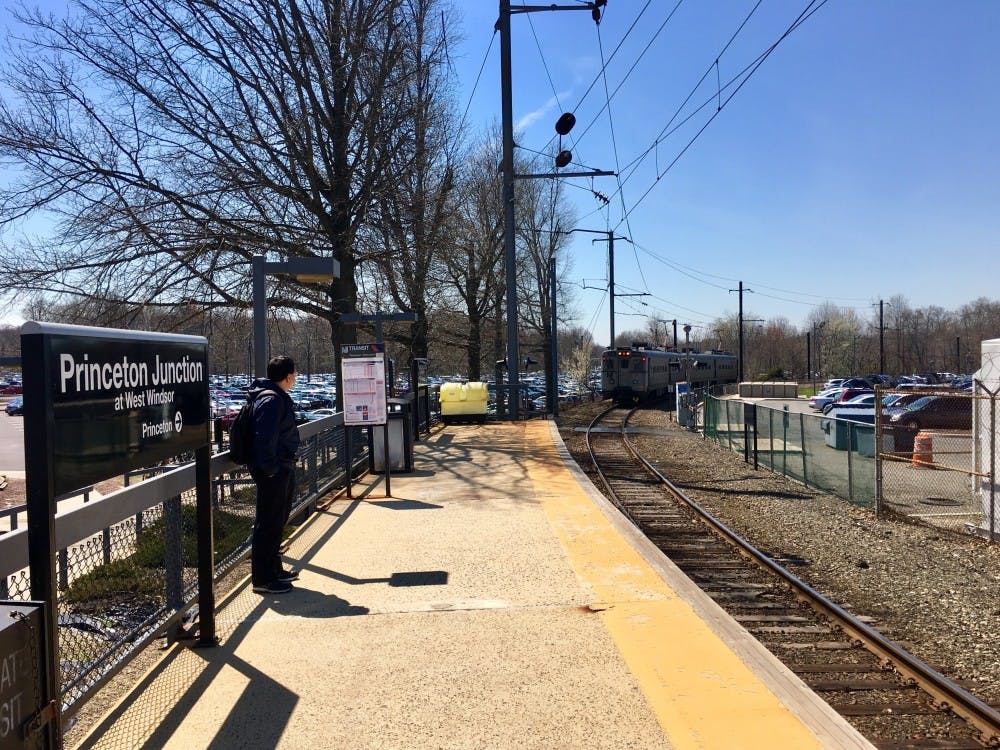When the news that the Princeton Dinky service would be temporarily closed, “Save the Dinky” petitions immediately appeared near the service as passengers expressed their frustration with the line shutdown. Since October, passengers have complained that the bus replacement has been “leaving commuters behind and causing them to miss their train connections.”
While disgruntled patrons were assured that the shutdown would only last a semester, it was postponed to an indeterminate date before June 30— causing Mayor Liz Lempert to comment: “We all thought the services would be restored sometime in January … that deadline came and went, and now we’re into the second quarter.” Lempert said, “It’s hard to 100 percent believe what we’re told.” Now, it is scheduled to resume service on May 25.
Missed deadlines and frustrating replacements exemplify the monumental problems facing the American transportation and infrastructure systems today. Our public transportation systems, as well as our roads, bridges, and electrical grids, are woefully outdated and desperately underfunded. Yet infrastructure seems to be a bipartisan concern — Donald Trump’s infrastructure plan was lauded as the only proposal he suggested that could bridge the aisle. But policies on both sides ignore the problem that has become apparent to Princeton residents during this Dinky debacle — repairing and updating existing infrastructure is not profitable, so it is not a priority. And that is having devastating effects on the country’s advancement.
Donald Trump’s infrastructure proposal, which largely died in Congress due to Republican opposition, included a plan to “offer $137 billion in tax breaks to private investors who would finance toll roads, toll bridges, or other projects that generate their own revenue streams.” After decades of extensive projects, there is not a large demand for more roads. This plan ignored the larger need for repairs of existing roads and bridges, as well as the restoration of disintegrating water mains in places like Flint, Michigan, and the modernization of our airports.
Economists agree that there are larger returns for fixing existing infrastructure, but that would require spending billions on public work projects that don’t lend themselves to large private investments or flashy opening ceremonies. While a plan that addresses the real needs of the American infrastructure system is necessary, it faces the double jeopardy of large government investment and low political payoff. This combination, along with a relatively low interest in infrastructure until something goes wrong (see the difference in attention the Dinky got before and after the shutdown), makes it difficult for politicians to rationalize spending billions of dollars on the projects we ultimately need.
The most egregious part of Trump’s plan is the emphasis on private investments. A “public-private partnership” (PPP) generally runs like this: private firms send bids to the relevant government authority for the rights to a project like a road, raising money to construct and maintain that road for a designated period of time. The firm’s money is returned through tolls or payments from the state. While the state isn’t receiving any of the money the road generates, the private company theoretically has more incentive to keep costs low and finish on time due to its investment.
On its face, it seems to be a good compromise. However, these PPPs are very rare and relatively unsuccessful. They also run the very high risk of corporate exploitation: wealthy investors have more resources and better lawyers than state governments, allowing them to finesse deals that cause the state to lose money in the long run. Furthermore, many of the truly worthwhile infrastructure projects, like those involving rail transit, aren’t profitable and will never attract investors. A dependence on these partnerships is not a sustainable solution for infrastructure renewal.
While politicians in DC debate the merits of private versus public funding, the Dinky remains shut down. The New York City subway system remains astonishingly bad, plagued with delays, shutdowns, smells, and accidents. The DC Metro struggles with similar issues, leading the Washington Examiner to name it “the worst in the world.” Governor Murphy released a report on NJ Transit detailing problems including a shortage of engineers (the source of the Dinky delays), a lack of spare parts, an uncommunicative agency, and an inconsistent source of funding.

A viable solution must be devised to address the failings of our public transportation systems — and viability ultimately depends on consistent investment. The private investment model depends too much on profit to be a widely used tool in infrastructure projects, and is not an option in the most glaring cases anyway. Instead, the federal and state governments must rededicate funds towards infrastructure projects, investing in jobs and communities via projects that update existing infrastructure. Creative revenue sources, such as the gas tax, can make up some of this funding, but until Congress is willing to make infrastructure spending a priority and allocate funds accordingly, the Dinky, and similar systems all over the country, will remain paralyzed.
Madeleine Marr is a sophomore from Newtown Square, Pa. She can be reached at mmarr@princeton.edu.
This column has been updated to reflect that the Dinky is scheduled to resume service on May 24. The ‘Prince’ regrets this error.









